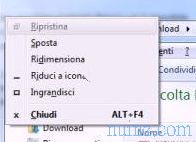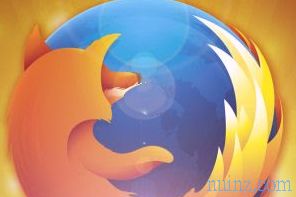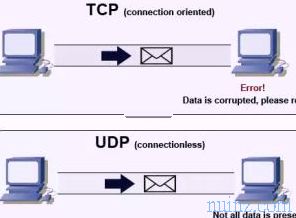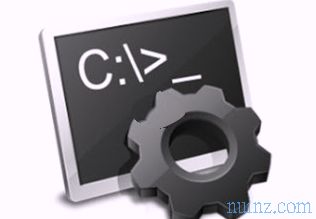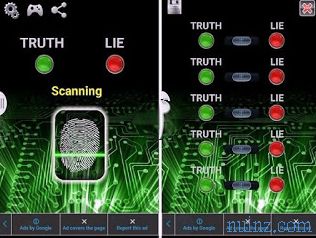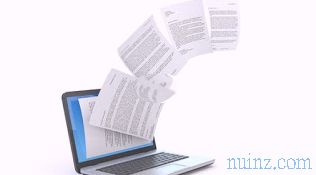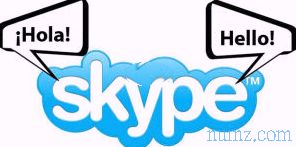 Time is an essential factor when using the computer and I am referring to the fact that those who work on the PC for any activity, must not waste time behind waiting times, progress bars and operation blocks.
Time is an essential factor when using the computer and I am referring to the fact that those who work on the PC for any activity, must not waste time behind waiting times, progress bars and operation blocks. To avoid wasting time it is better to have fast buttons on the desktop that are used to start or end processes in one click, always ready when needed.
These are useful desktop shortcuts to be created on Windows that allow you to perform common tasks without having to look for them in the various control panels.
I really recommend spending the next 10 minutes adding these icons to the desktop which I'm going to explain the function of.
First of all, each of the commands described here can be added to the desktop by creating a new shortcut ( Right click on the desktop -> New -> shortcut ) and pasting the command and then, in the next window, giving a name of your choice.
1) Safe removal of USB sticks or other hardware .
When you insert the USB stick into your computer, it is good to disable it before removing it so as not to risk data loss. The default method to disable USB flash drives is by clicking the small icon in the system tray on the right which can be laborious, especially if you are in a hurry.
The shortcut to be created on the desktop must have a path
RunDll32.exe shell32.dll, Control_RunDLL hotplug.dll
You can now double click on the link you just created and select the hardware device you want to remove.
2) Eject and disable a specific drive, ipod, mp3 player or USB device .
For more control, if you always use the same USB stick or external drive and detach it and reattach it every day, you can create a specific command that deactivates it without going through the screen for choosing the devices in point 1.
In this case it is advisable to use an external tool called USB Ejector, free of charge, to download to the computer as portable software without installation
This program allows you to select the device to be ejected.
Once the USB_Disk_Eject file has been copied to a folder, for example in C: /, you can create a quick shortcut on the desktop by creating a new shortcut and giving the following path:
C: \ USB_Disk_Eject.exe / REMOVELETTER X
The letter X should be replaced with the one that Windows assigns to the drive, visible in computer resources.
3) Launch the screensaver
If you want to start the screensaver immediately to darken the screen, or just for fun, you can do it from the command line to put as a shortcut on the desktop. First you need to choose which screensaver to display by going to the C: \ Windows \ System32 folder and searching for the * .scr files; all files found are screensavers.
After taking note of the name of the screensaver file you want to start with a double click, create a new link and give the following path:
C: \ Windows \ System32 \ Mystify.scr / s
4) Enable and disable window transparency .
Some operations work best when the Aero transparency of Vista and Windows 7 is turned off but, doing it manually, takes time and effort. You can create a button on the desktop to quickly turn off and on transparency.
To disable it, create a new link with the following path rundll32.exe dwmApi # 104 while to activate the Aero transparency of the windows : rundll32.exe dwmApi # 102
5) Mute the sound and put Mute with a click
Many laptops include the "mute" button which allows you to turn off Windows sounds easily when working in a public place.
If this button is missing, not bad, you can add it as a desktop icon.
For this functionality, the NirCmd program must be downloaded by extracting the executables in a folder of your choice.
Then right click on the desktop, choose New> Shortcut and write the path to the Nircmd file:
"C: \ path \ nircmd.exe" mutesysvolume 2
This icon placed on the desktop allows you to turn off the computer volume with a double click.
6) Hibernate the PC
If you leave your PC for a while, you can save energy by hibernating it right away, without waiting for it to go alone for internal Windows settings.
The desktop shortcut that does this job means is:
C: \ Windows \ System32 \ rundll32.exe powrprof.dll, SetSuspendState 0, 1, 0
7) Eject CD / DVD
Still with NirCmd seen in point 5, it is possible to create a link that opens the CD / DVD player.
The path of the link is
"C: \ path \ nircmd.exe" cdrom open D:
Replace 'path' with the folder where the nircmd.exe file is located. To close the CD player, use the same command by putting close to the open post.
8) Turn off the computer
Instead of going to the Start menu to shutdown your PC, you do this by double clicking on a desktop icon.
The command to be given to the new link is Shutdown.exe -s -t 00
9) Restart the pc
The command is similar to shutdown: Shutdown.exe -r -t 00
10) Lock your computer with a password .
Still with the Windows function of the new desktop shortcut, put Rundll32.exe User32 as the path . dll, LockWorkStation .
11) End blocked programs
Locked windows and programs can be closed when they no longer respond with the link to the following taskkill.exe / f / fi "status eq not responding" command
12) Restart the Windows interface, Explorer.exe .
When a window of some folder seems to freeze, it is better to restart Explorer.exe, that is the graphical interface of Windows.
To do this, this time, you have to create a new text document on the desktop, write on it (Paste):
@echo off
taskkill / f / IM explorer.exe
explorer.exe
Save this file with the name " restart_explorer.bat " and (change the file extension from txt to bat I recommend).
13) Open the Windows 10 activity viewer
In Windows 10, you can create a desktop shortcut that opens the activity viewer.
The new link must have the path % windir% \ explorer.exe shell ::: {3080F90E-D7AD-11D9-BD98-0000947B0257}
If you know others, leave your comments; remember that for any command you can also create a combination of keys by right clicking on the link and going to the properties (shortcut keys)
To speed up the use of the computer, it is also convenient to print the page of the main keyboard commands and shortcuts for Windows.





